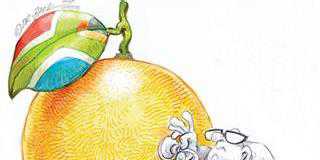Politicians want to get re-elected, so they think in five-year terms. That’s why the apartheid government mindlessly kept black farmers, researchers, advisors and entrepreneurs out of mainstream agriculture.

Cartoon by: Dr Jack
Skewed land ownership aside, we now have a ruling party that doesn’t understand what drives commercial farming, and listens to any advice if it’s guaranteed to discourage private investment in the only pillar keeping the fragile rural economy standing.
They even want to destroy the wildlife industry – an integral part of the landscape that utilises ecosystems more productively than most systems. Land redistribution deserves undivided attention, but it isn’t the biggest challenge to stability.
The real threat lies in that burgeoning part of our population under 16 years old. These youngsters will be out of school and voting soon – many without any prospect of finding decent jobs. Instead, they’re relying on social welfare payments for survival. It’ll be difficult to get youngsters interested in farming – across the world it has become an elderly occupation, and one that sheds rather than creates more jobs.
Thanks to skyrocketing costs for electricity, fuel, transport, fertiliser, water, and taxes, that trend’s here to stay.
Despite this, government thinks that a rural development plan based on agricultural production, including the nationalisation of farms, will stem the flow of people to the cities and pacify the restless youth. But this country’s harsh climate and poor soil can only provide a living for so many people.
The number of commercial farmers has fallen from about 150 000 in the 1960s to less than 40 000 today. And in 20 years from now, it’s projected to stabilise at around 7 000. Rundown rural towns and villages show farming’s decline as a viable provider of livelihoods.
Sure, there’s scope for market-driven processing and value adding, but without huge irrigation schemes taking water to all corners of the arid interior, there can be no hope of realising the theorists’ dream of a vibrant farming community, with farmers happily tilling the soil as far as the eye can see.
Also, it takes longer than a generation to turn subsistence farmers into competitive modern commercial operators. By the time today’s experienced farmers have been replaced, new technology will have overtaken those who are still struggling to master farming basics. Food security and a healthy agricultural sector rely on incentives. No one increases or improves production if there’s no profit to be made. No one invests in infrastructure or new technology if there’s more risk than reward.
Good farmers see their farms as living organisms that have to be fed, looked after and constantly improved. Farms grow in increments as successive owners add improvements. The bonus of earning capital gains is one of the main driving forces of commercial farming.
Take away the profit carrot and you end up with what has happened in land reform – trashed farms. It’ll be almost impossible to restart the conveyor belt that feeds food and export products to the cities once it has ground to a halt.
The way forward is obvious:
- Support partnerships between emerging farmers and commercial farmers or agribusinesses.
- Select appropriate new farmers for each type of enterprise.
- Settle new farmers on underutilised state land.
- Don’t expect too much from mentors – success depends on the individual’s attitude towards productivity and profit. Create job opportunities outside the agricultural sector.












